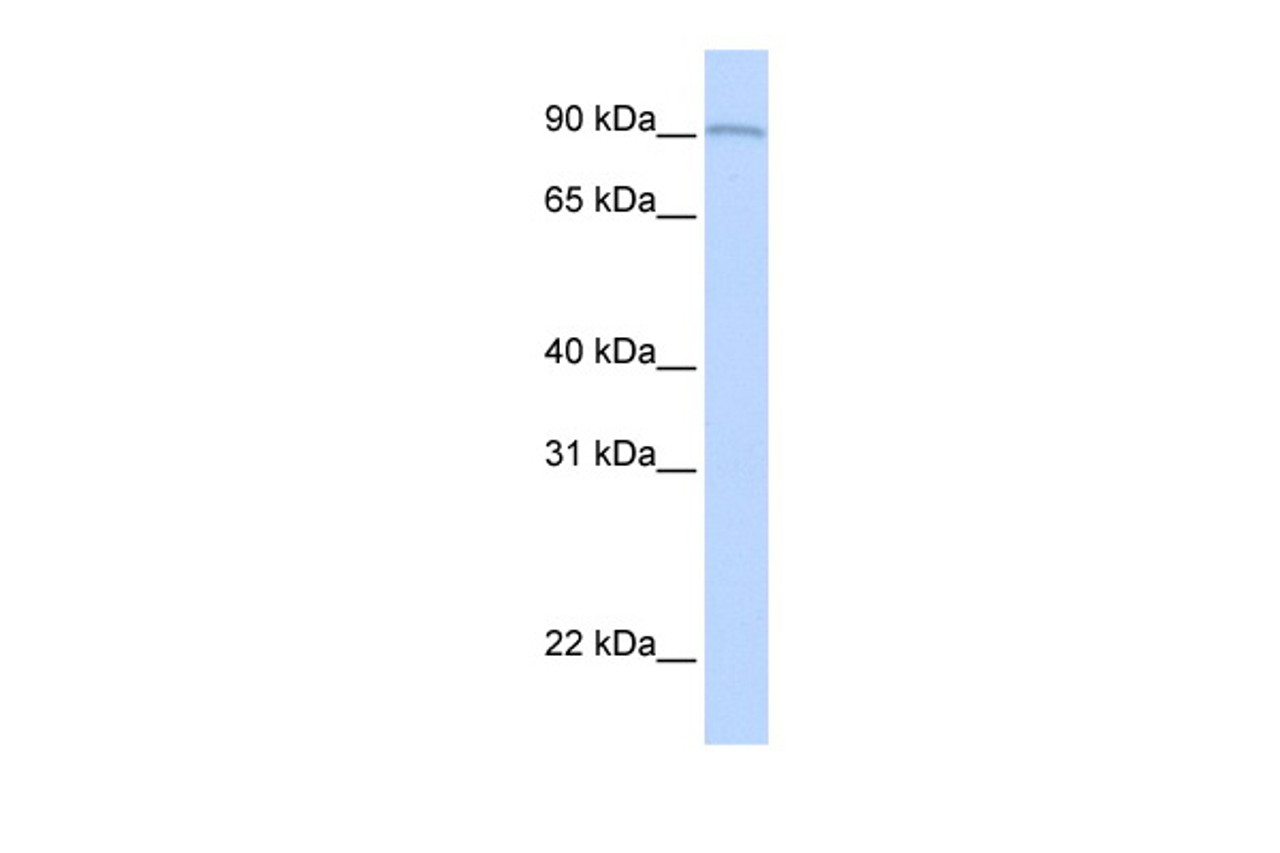Product Description
AOC2 Antibody | 26-030 | ProSci
Host: Rabbit
Reactivity: Human
Homology: N/A
Immunogen: Antibody produced in rabbits immunized with a synthetic peptide corresponding a region of human AOC2.
Research Area: Membrane, Signal Transduction
Tested Application: E, WB
Application: AOC2 antibody can be used for detection of AOC2 by ELISA at 1:1562500. AOC2 antibody can be used for detection of AOC2 by western blot at 1 μg/mL, and HRP conjugated secondary antibody should be diluted 1:50, 000 - 100, 000.
Specificiy: N/A
Positive Control 1: Cat. No. XBL-10410 - Fetal Lung Tissue Lysate
Positive Control 2: N/A
Positive Control 3: N/A
Positive Control 4: N/A
Positive Control 5: N/A
Positive Control 6: N/A
Molecular Weight: 84 kDa
Validation: N/A
Isoform: N/A
Purification: Antibody is purified by peptide affinity chromatography method.
Clonality: Polyclonal
Clone: N/A
Isotype: N/A
Conjugate: Unconjugated
Physical State: Liquid
Buffer: Purified antibody supplied in 1x PBS buffer with 0.09% (w/v) sodium azide and 2% sucrose.
Concentration: batch dependent
Storage Condition: For short periods of storage (days) store at 4˚C. For longer periods of storage, store AOC2 antibody at -20˚C. As with any antibody avoid repeat freeze-thaw cycles.
Alternate Name: AOC2, DAO2, RAO
User Note: Optimal dilutions for each application to be determined by the researcher.
BACKGROUND: Copper amine oxidases catalyze the oxidative conversion of amines to aldehydes and ammonia in the presence of copper and quinone cofactor. The protein contains several conserved motifs including the active site of amine oxidases and the histidine residues that likely bind copper. It may be a critical modulator of signal transmission in retina, possibly by degrading the biogenic amines dopamine, histamine, and putrescine. Copper amine oxidases catalyze the oxidative conversion of amines to aldehydes and ammonia in the presence of copper and quinone cofactor. This gene shows high sequence similarity to copper amine oxidases from various species ranging from bacteria to mammals. The protein contains several conserved motifs including the active site of amine oxidases and the histidine residues that likely bind copper. It may be a critical modulator of signal transmission in retina, possibly by degrading the biogenic amines dopamine, histamine, and putrescine. This gene may be a candidate gene for hereditary ocular diseases. Alternate splicing results in multiple transcript variants.
 Euro
Euro
 USD
USD
 British Pound
British Pound
 NULL
NULL










